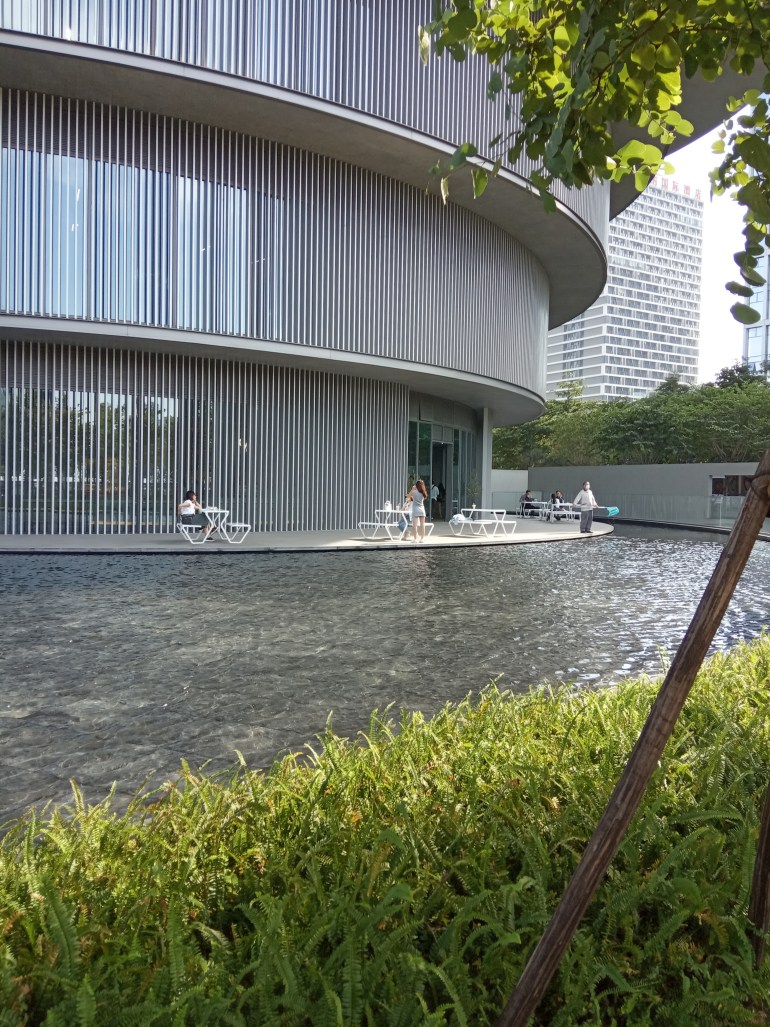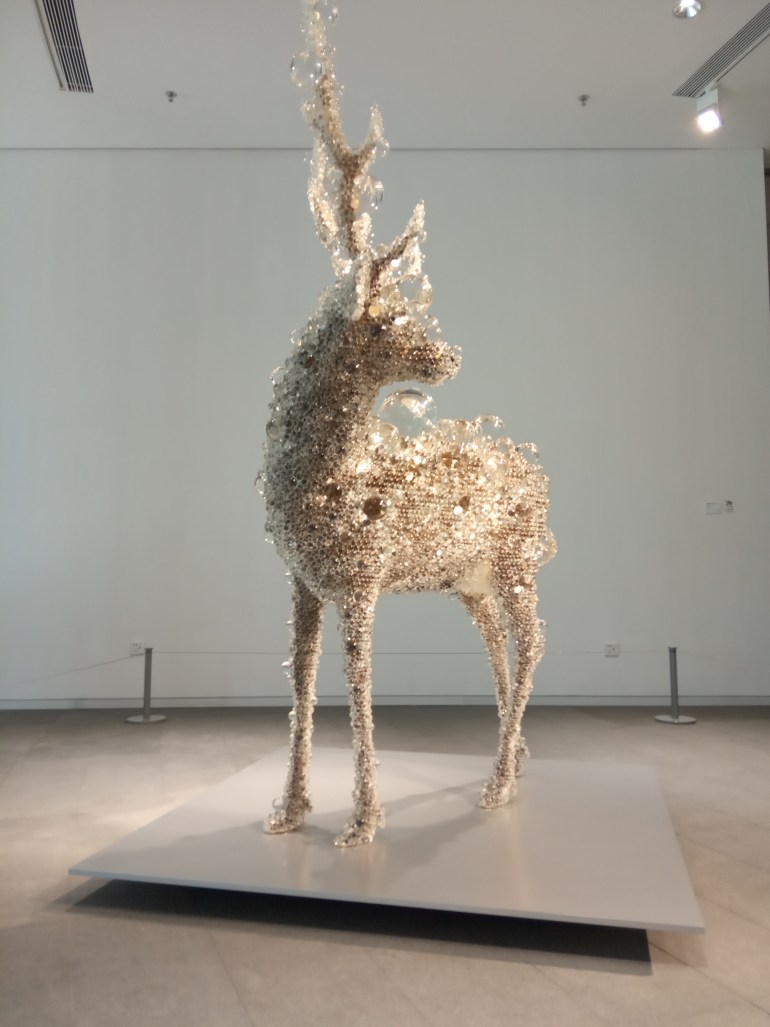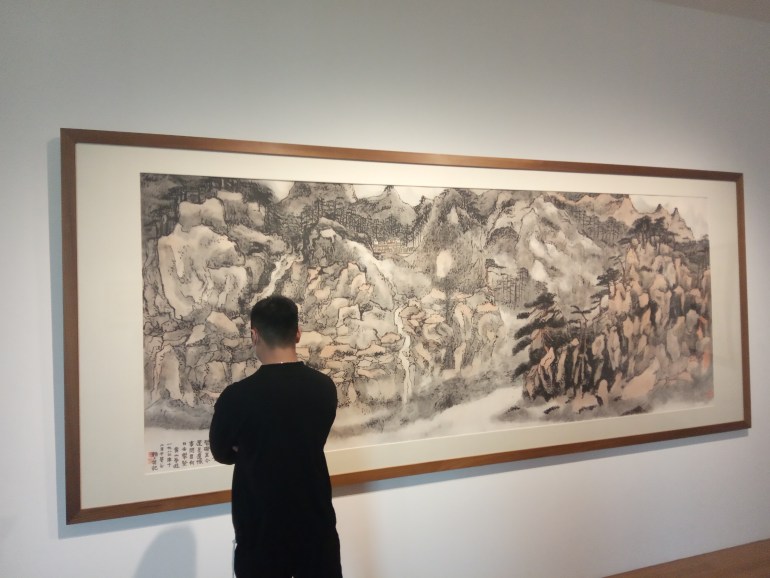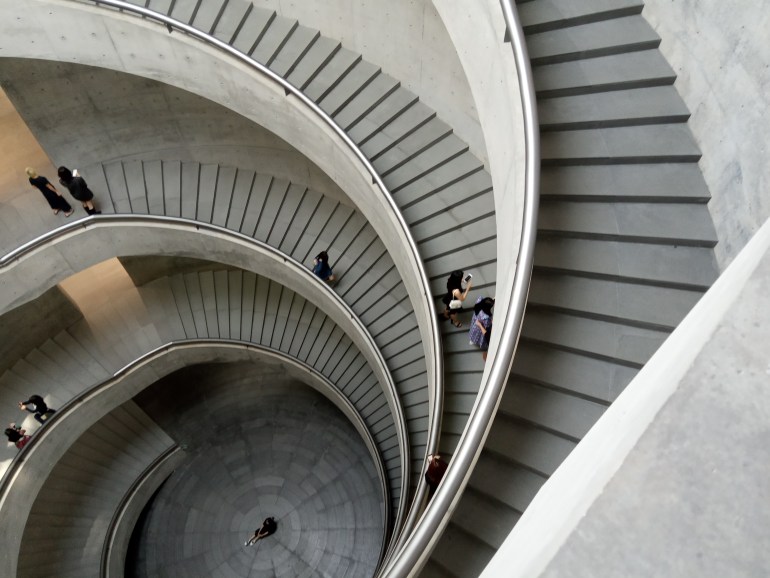He Art Museum makes ‘gutsy’ China arts push in industrial Foshan
The museum, founded by the family behind the appliance maker Midea, is designed by Japanese architect Tadao Ando.
![The He Art Museum was designed by Tadao Ando in Foshan, a city better known for its factories [Michael Standaert/Al Jazeera]](/wp-content/uploads/2020/11/AJE-China-HEM-spiral-roof.jpg?resize=770%2C513)
Foshan, China – After five years of planning, a pandemic and a failed kidnapping, the He Art Museum, China’s buzziest new private arts venue in Guangdong province, is finally welcoming visitors.
Initially delayed by the COVID-19 outbreak, which scuttled its planned mid-March unveiling, it was then almost derailed by a June kidnapping attempt on the founders of the Midea electronics empire – 78-year-old He Xiangjian and his son, the museum’s founder 55-year-old He Jianfeng – at a nearby villa complex.
But with the drama behind them and China one of the countries currently least-affected by the coronavirus, the He Art Museum [HEM] opened its doors in the southern city of Foshan in October – during China’s National Day.
Shao Shu, executive director of HEM, told Al Jazeera that the He family hopes the venue can showcase a balance between Chinese, Lingnan – roughly Cantonese – and Western artistic cultures and further develop art and culture in the family’s hometown; a city better known at the moment for its vast factory-scapes than for art.
“HEM would like to turn private enjoyment into public pleasure,” he said.
The family commissioned world-renowned Japanese architect Tadao Ando to design the glass-walled concrete building, which was inspired partly by the region’s traditional earthen roundhouses.
 The He Art Museum was designed by world-renowned Japanese architect Tadao Ando [Michael Standaert/Al Jazeera]
The He Art Museum was designed by world-renowned Japanese architect Tadao Ando [Michael Standaert/Al Jazeera]‘Mundane world’
The venue has begun to showcase pieces from He Jianfeng’s own collection, built up over the past 10 years and including about 500 works, three-quarters of them either Chinese traditional or contemporary art and the remainder from the west.
The opening exhibition, curated by Feg Boyi, is called Mundane World featuring scenes and materials from daily life – coloured box rooms full of light fixtures and a “mundane canteen” filled with artifacts from Shunde culinary traditions. Other rooms include sculptures ranging from a set of large tractor-like wheels made of everyday materials by artist Yin Xiuzhen, to an installation by Palestinian artist Mona Hatoum – a world map made from clear glass marbles that fills the floor.
There are also several rooms of Lingnan art pieces featuring snowy landscapes and water buffalo.
From the HEM collection itself is the impressive PixCell Deer by Kohei Nawa, built out of clear and golden glass bubbles and other materials, it stands on its own as visitors turn a corner between gallery rooms.
“In the future, according to the collection’s content, it will be strengthened by [various] types and expanded by artwork from young artists worldwide,” Shao said.
 PixCell Deer by Kohei Nawa is part of the museum’s permanent collection [Michael Standaert/Al Jazeera]
PixCell Deer by Kohei Nawa is part of the museum’s permanent collection [Michael Standaert/Al Jazeera]In the past 40 years, the number of art museums in China has ballooned from just a few hundred to more than 5,000, according to statistics from China’s National Cultural Heritage Administration.
“From my perspective, museum growth – both public and private sector – is an exciting development and good for enriching community, culture, education, and civic pride,” Meg Maggio, director of Pekin Fine Arts gallery in Beijing and Hong Kong, told Al Jazeera from Boston.
‘Gutsy’
Recent government planning has aimed for greater inclusion of the arts in the education system. During the next five years, that will only strengthen as provinces roll out ambitious museum growth plans, Emily de Wolfe Pettit, founder and chief cross-cultural strategist at Peking Arts Associates told Al Jazeera.
And while its location in Foshan may have drawn some guffaws, most who have followed the venue’s development think that it makes perfect sense.
“I think that it’s fabulous that they’ve chosen to place the museum [in Foshan] rather than Guangzhou or Shenzhen,” de Wolfe Pettit said. “It’s quite gutsy to do this. There’s a real opportunity here to spread knowledge and also a sense of local pride.”
 The museum also showcases more traditional Chinese art [Michael Standaert/Al Jazeera]
The museum also showcases more traditional Chinese art [Michael Standaert/Al Jazeera]“The He Art Museum also has close ties with Hong Kong and is a good example of Greater Bay regional growth and cooperation,” she said referring to the development area across the southern cities.
Shao says HEM wants to be a museum with local roots but a global perspective.
While the museum hopes to draw art lovers from big cities like Beijing, Shanghai, and elsewhere, the founders know that residents in these places already have plenty of opportunities to visit art museums and other cultural venues, so the focus is on drawing people from Foshan and the surrounding Greater Bay Area.
“For local audiences, they may not have many opportunities for exposure to well-known international contemporary artwork,” Shao said. “Therefore, HEM is dedicated to showing the specialty in local culture to international audiences and to presenting what is happening in the art world outside to local audiences.”
With China’s strict border controls to keep COVID-19 cases from inundating the country, foreign visitors are few on the ground, giving local audiences more of a chance to explore.
 Tadao Ando designed the building with spiral staircases at its heart [Michael Standaert/Al Jazeera]
Tadao Ando designed the building with spiral staircases at its heart [Michael Standaert/Al Jazeera]Foshan currently has a population of around seven million, although the entire Greater Bay Area region population is ten times that.
“There’s enough of an audience, there are enough artists, that can sustain [museum growth] here and sustain the programmes,” De Wolfe Pettit said. “They’re making serious commitments, with serious architecture and serious curators, it’s a wonderful initiative. I’ll be eagerly watching what they do next.”
https://www.aljazeera.com/news/2020/12/7/in-industrial-foshan-he-art-museum-joins-chinas-arts
posted by Satish Sharma at
08:15
![]()

0 Comments:
Post a Comment
Subscribe to Post Comments [Atom]
<< Home